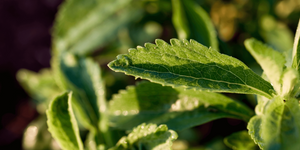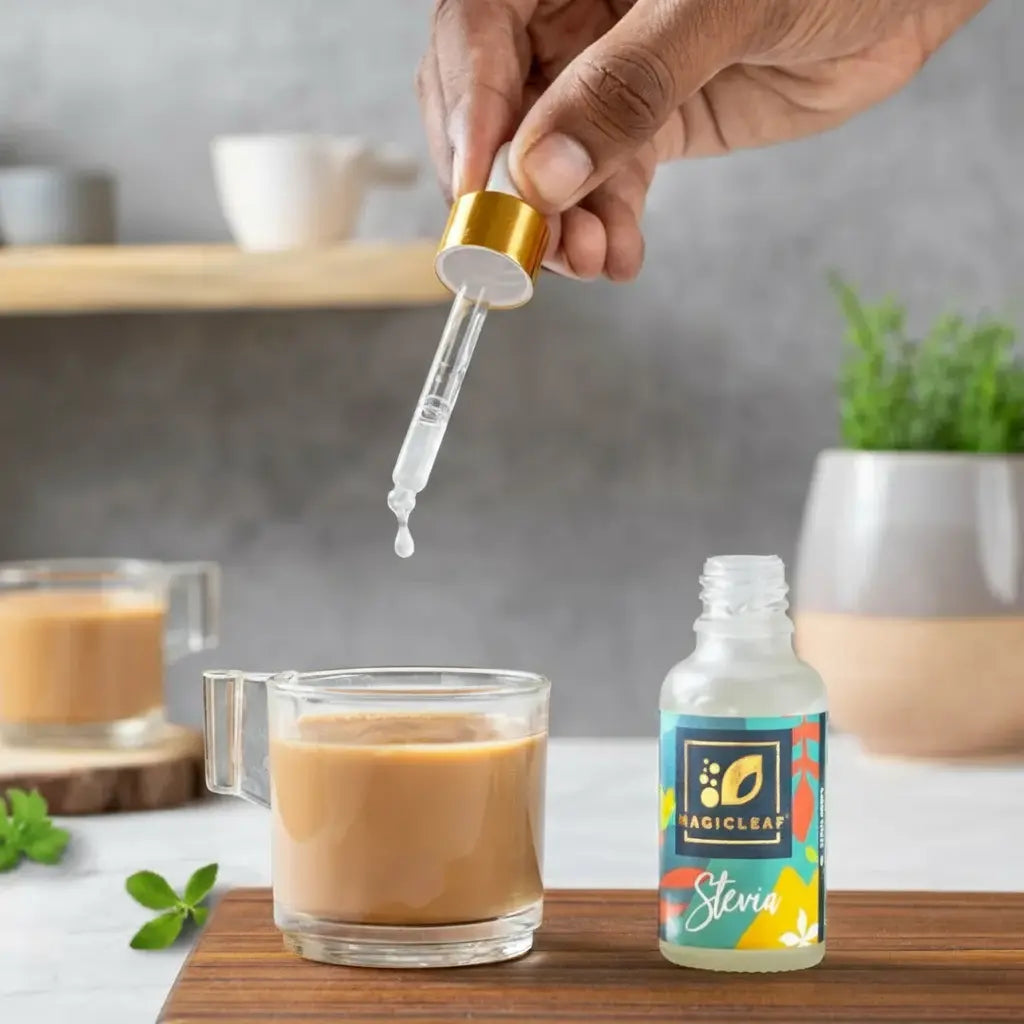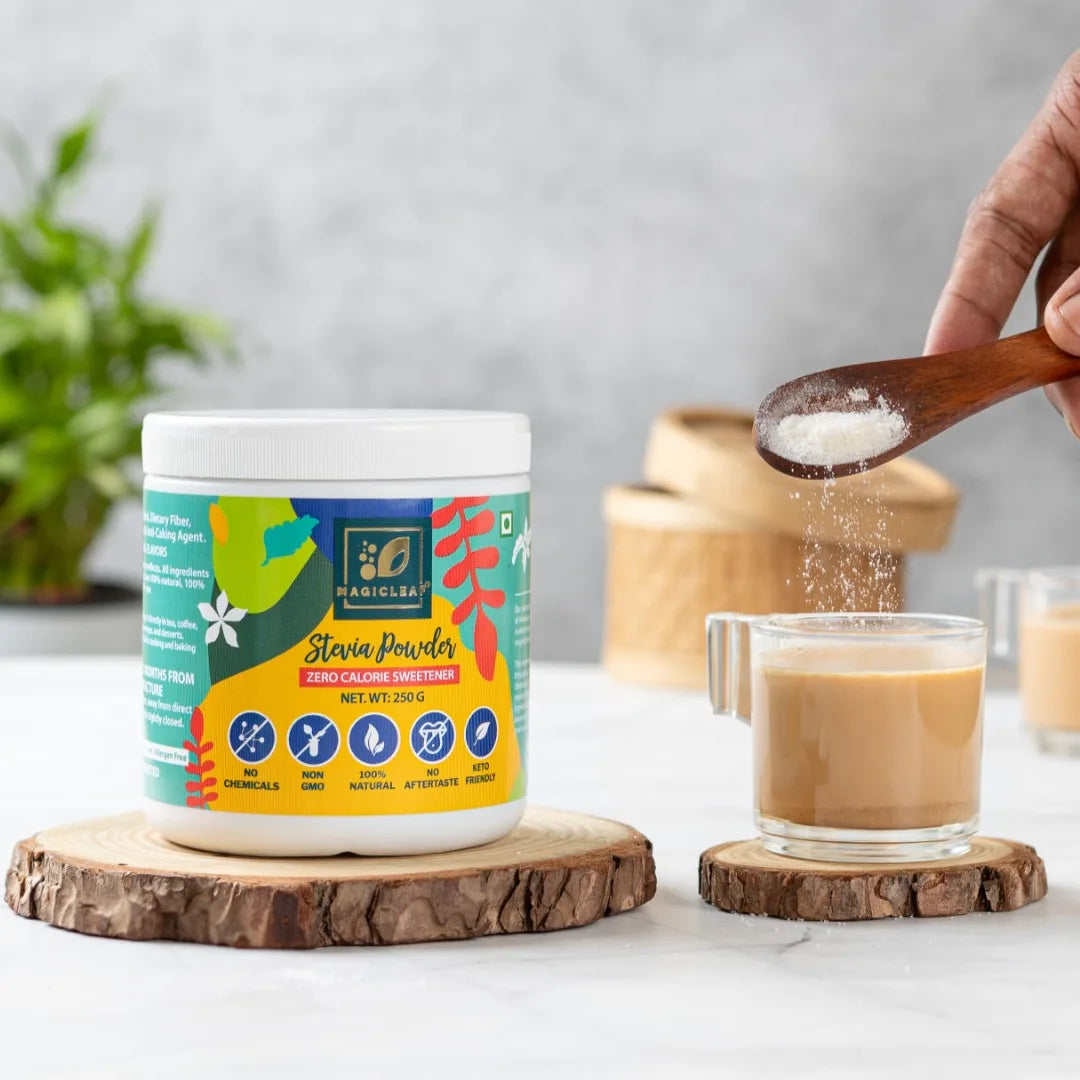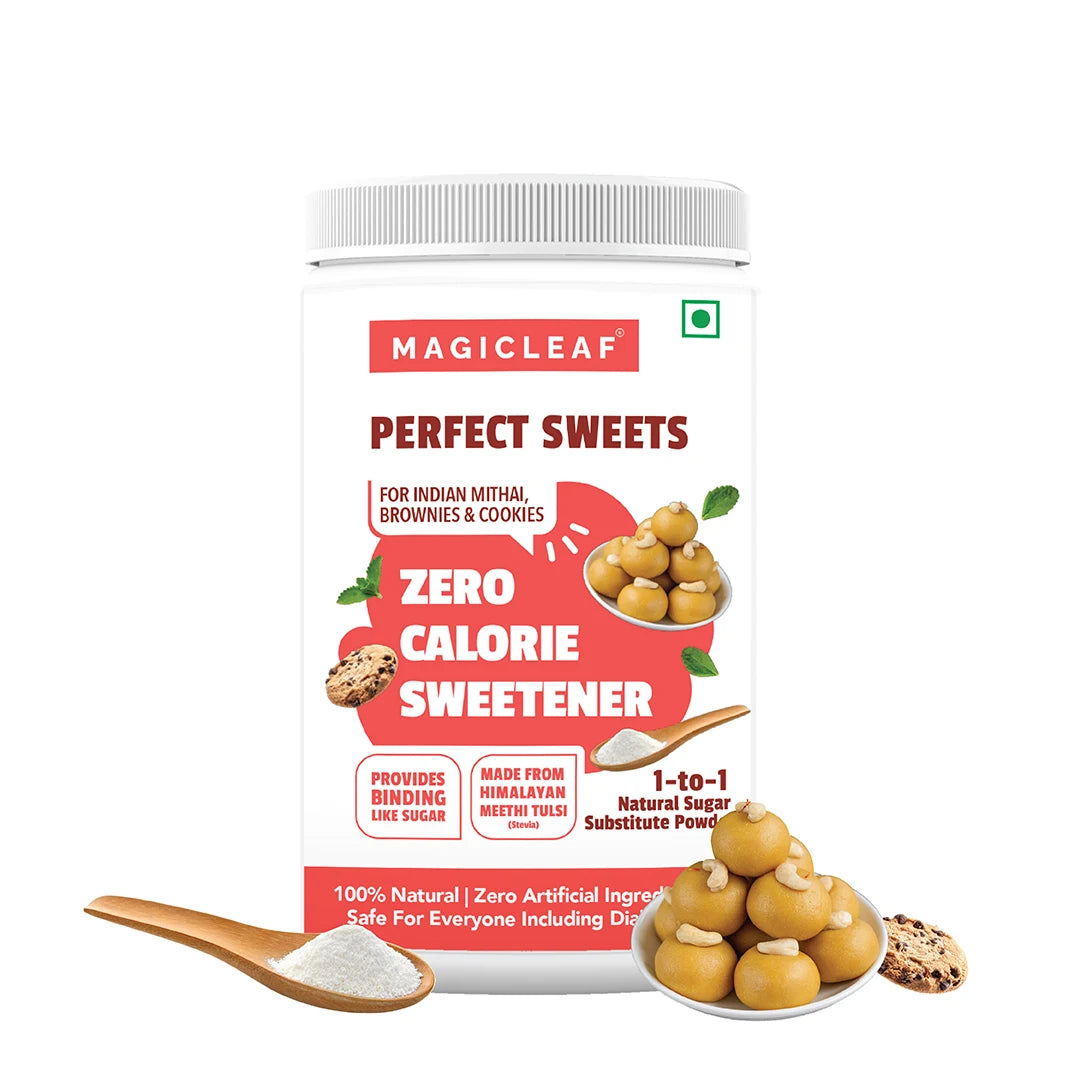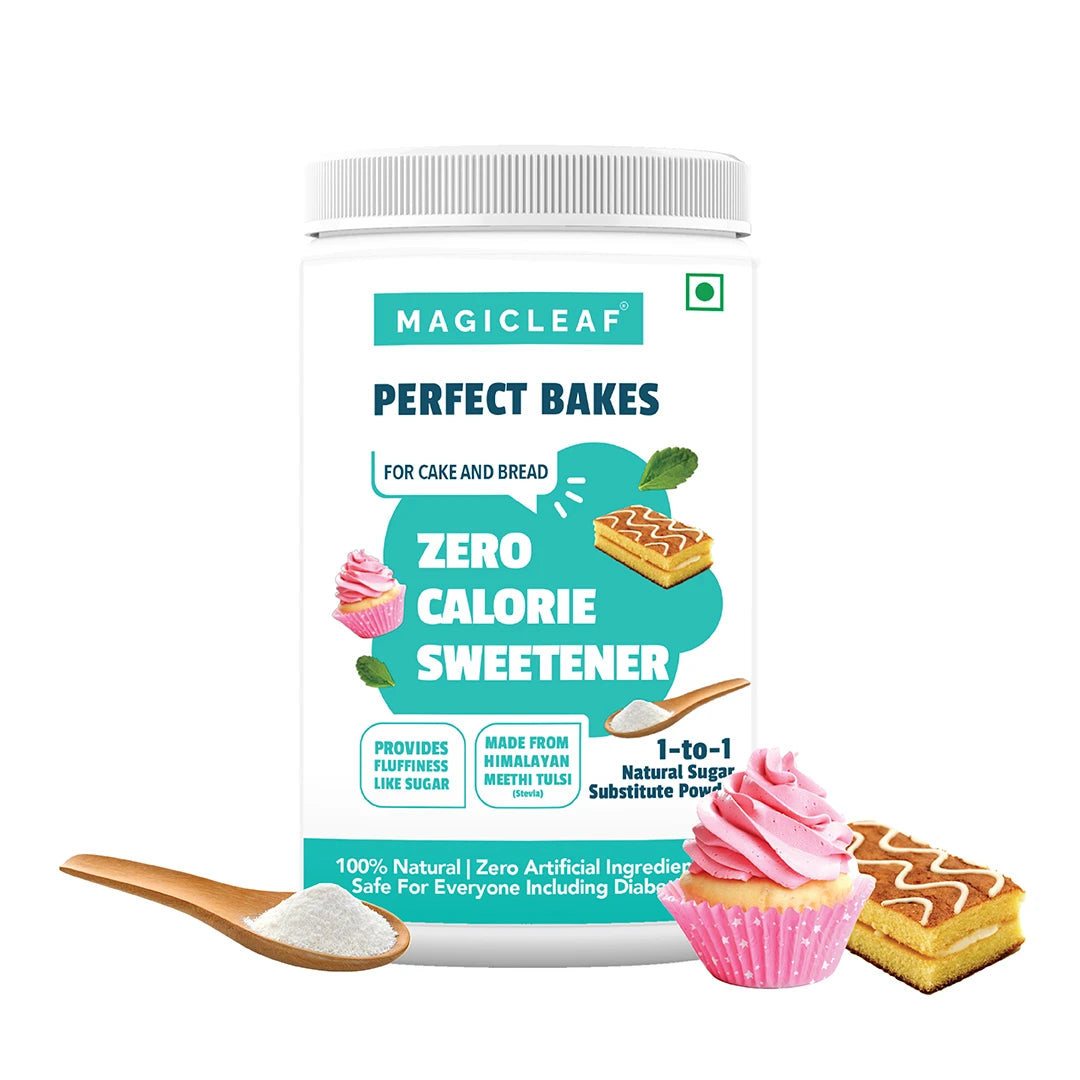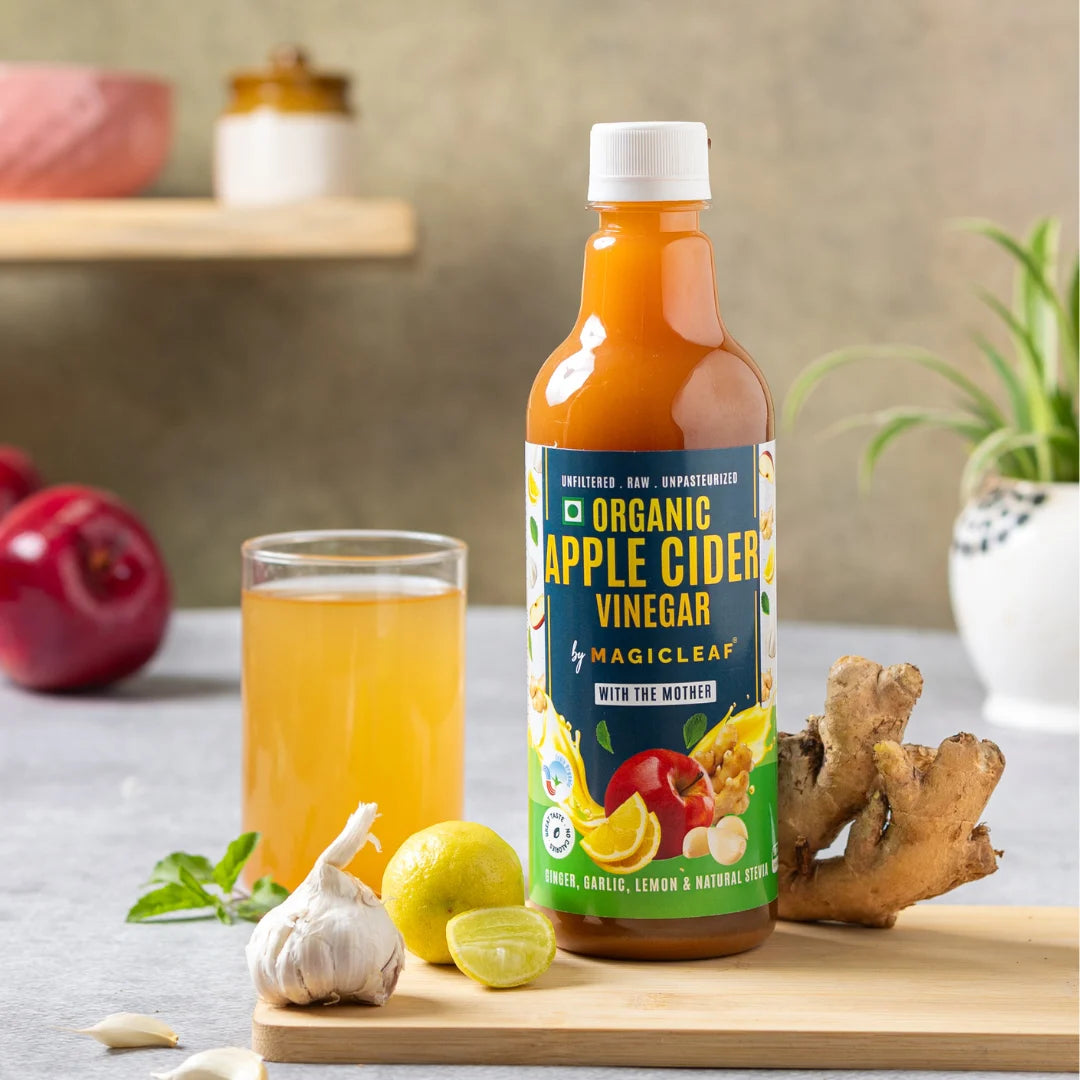Stevia or Stevia rebaudiana, is a sweet herb native to Paraguay; approximately 200 – 300 times sweeter than sugar. But where does the sweetness in the stevia plant come from, or to be specific what makes the leaves of this herb sweet?
Let’s take a look at the BTS (Behind the sweetness).
Chemical compounds present in the stevia leaf called steviol glycosides are responsible for the signature sweet taste obtained from the plant. These glycosides are extracted from the leaf via numerous methods, filtered, and processed with other ingredients to be sold as liquid stevia or in powdered form.
More than 40 of these sweet compounds have been identified and approved by the FDA; to date. All steviol glycosides share a similarity in their molecular structure. The steviol molecule is attached to glucose entities by glycosidic bonds. The number of glucose entities and the position at which glucose is attached determines the unique taste profile and sweetness intensity for different glycosides.
The following lines describe some of these sweet compounds.

